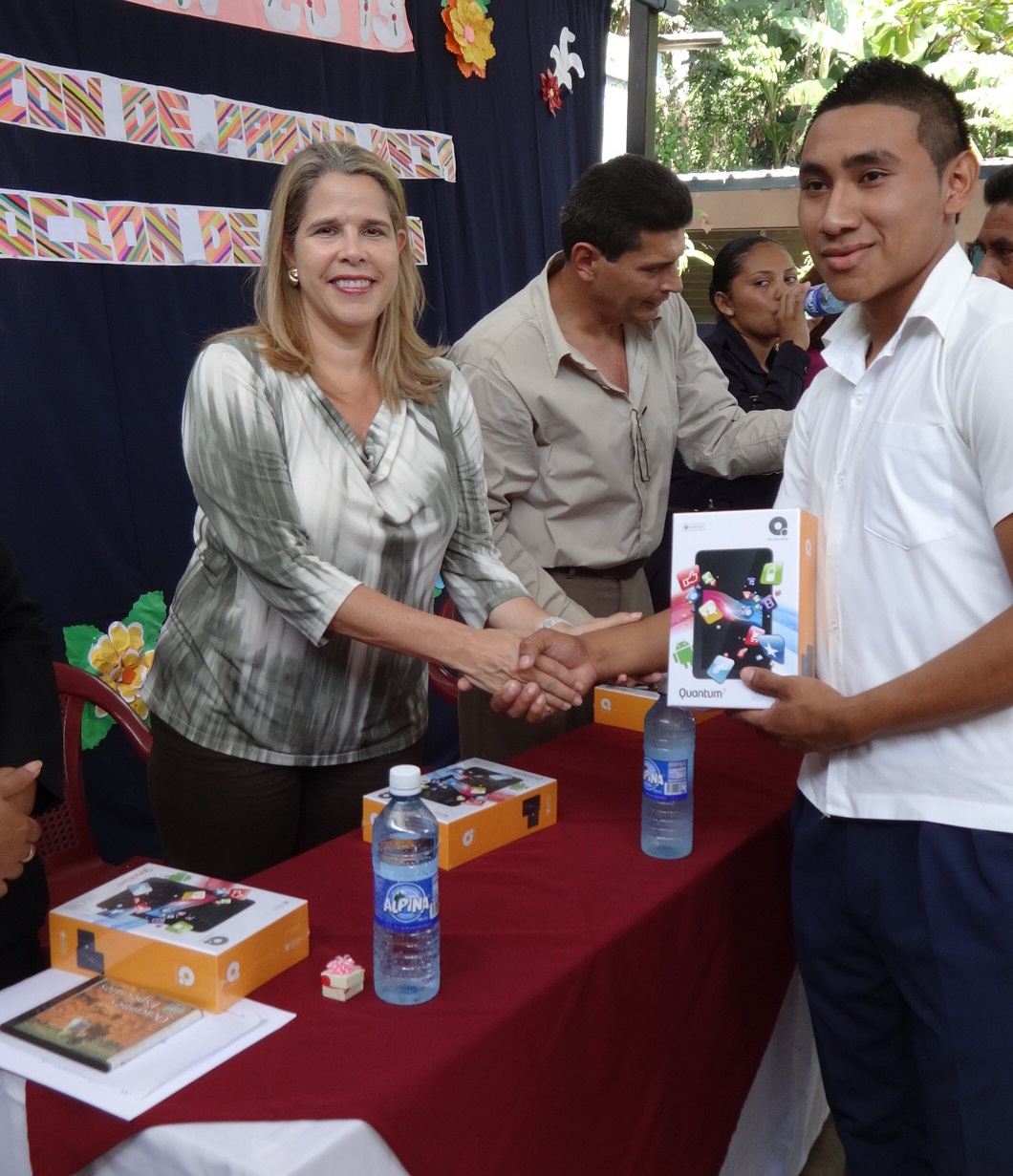
Building on a partnership created by ICMA, two municipalities in El Salvador have adapted and put in place a Gang Reduction and Intervention Partnership (GRIP) program, modeled on an initiative in California. The objective of the program is to intervene with elementary and secondary school students who exhibit disruptive behavior and poor academic performance by providing incentives for them to improve their performance, stay in school, and resist involvement in gangs.
Sharing Successful Practices
ICMA’s Municipal Partnerships for Violence Prevention in Central America (AMUPREV) program partnered the Salvadoran municipalities of Sonsonate and Nahuizalco with Santa Ana, California. The partnerships, funded by the U.S. Agency for International Development (USAID), employed the ICMA CityLinks™ model. Through a series of exchange visits, staff and officials from Santa Ana, particularly the police department, provided information about the city’s community-oriented policing programs and other crime and violence prevention practices.
In adapting GRIP principles, the Salvadoran cities named the program Early Care and established pilots in three schools, two in Sonsonate for students in grades one through six and one in Nahuizalco for grades three through eight.
Involving the Community
To lay the groundwork for Early Care, AMUPREV staff, led by Local Technical Consultant Marisa Fortín de Miranda, coordinated with the mayor’s office, the Municipal Crime Prevention Council, the police, the private sector, and other stakeholders in each city. Staff selected the three schools based on the commitment of their principals. Then they coached the teachers, explaining the importance of focusing on improvement in students’ behavior rather than on misbehavior.
In each school, teachers helped identify five students for the pilot from each grade, 90 in all. Parents were involved from the beginning, when they participated in an orientation session at the schools with their children. Performance incentives included assistance with homework and additional after-school instruction, lunches and park visits that included their families, and visits to a police department. The purpose of including families was to promote their involvement in changing the behavior of the students in school and at home.
The Pilot
The students’ academic and behavioral performance was monitored periodically according to defined quantitative indicators, such as attendance, completion of homework, appropriate behavior and personal appearance, and improvement in academic performance. And at the end of the pilots, six students from each school were awarded a tablet computer in a ceremony at the school.
AMUPREV staff evaluated the pilots in all three schools with teachers and administrators and gathered suggestions for future implementation. The school director in Nahuizalco commented that because of the involvement of various institutions in the program, including the municipality and the police, the experience had helped build trust between police in particular and students and their families.
About AMUPREV
Municipal Partnerships for Violence Prevention in Central America (AMUPREV) began in 2009 and is funded by USAID. Its purpose is to help Central American countries develop innovative violence prevention programs, starting with El Salvador and Panama and later expanding to Guatemala. AMUPREV seeks to establish networks that share best practices and lessons learned in crime and violence prevention and reduction throughout the region. The formal objectives of the program are to:
- Promote comprehensive local-level violence prevention strategies and programs and foster development of regional peer knowledge networks that will be self-sustaining in the future
- Employing ICMA’s CityLinks model, provide training and technical assistance to local governments and community groups in coordination with police and other local-level programs.
About GRIP
The Santa Ana Unified School District School Police Department entered into a Gang Reduction and Intervention Partnership with the Orange County District Attorney’s Office (OCDA), the Orange County Probation Department, and the Santa Ana Police Department aimed at keeping youth in school and out of gangs.
Through the GRIP initiative, partners identify at-risk youth in grades four through eight in Santa Ana and work to increase their school attendance and discourage participation in gang activity. Santa Ana GRIP partners collaborate to host informational parent, student, and faculty meetings, conduct curfew sweeps in areas with high-volume gang activity, and perform truancy sweeps at homes of students with excessive absences. GRIP incentives such as tickets to professional sporting events are offered to students who improve their attendance and grades and complete the school year with no gang activity or affiliation.
Over time, the educational component of the program (GRIP II) was implemented county-wide. OCDA staff members volunteer their time to conduct school faculty presentations on how to mentor at-risk students. Through an on-campus parent-greeter program, volunteers train parents on how to keep neighborhoods safe and gang-free through neighborhood watch. The OCDA volunteers, along with police and probation officers, also make at-risk youth aware of the negative consequences of joining gangs and the positive effects of staying in school.
About ICMA International
For more information about ICMA’s international programs, visit the ICMA International website and the “International Development” topic in the Knowledge Network, or email international@icma.org.
New, Reduced Membership Dues
A new, reduced dues rate is available for CAOs/ACAOs, along with additional discounts for those in smaller communities, has been implemented. Learn more and be sure to join or renew today!
